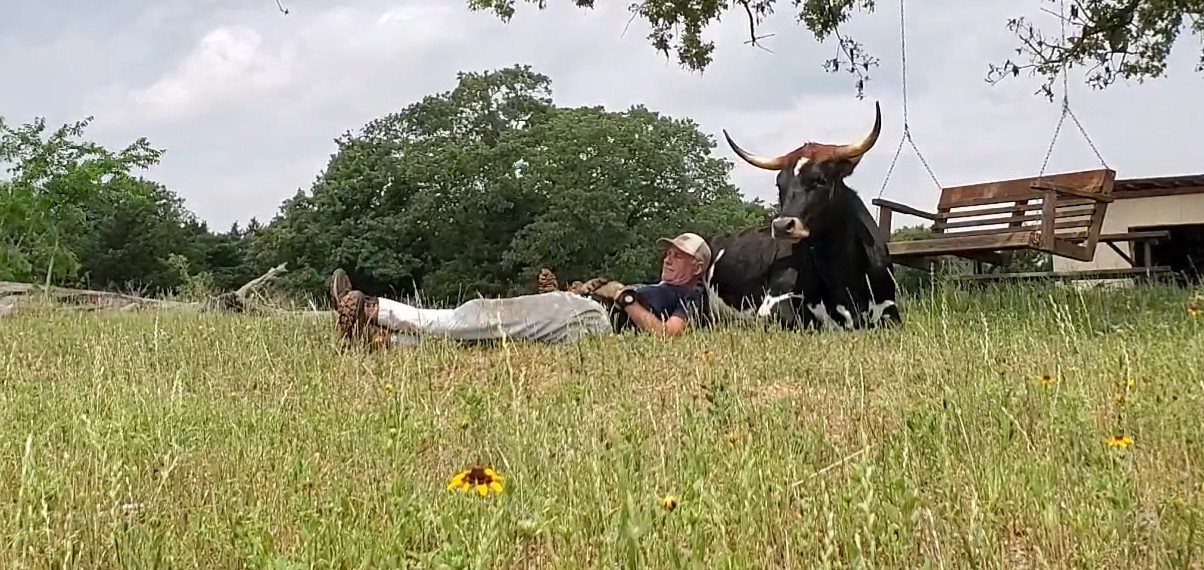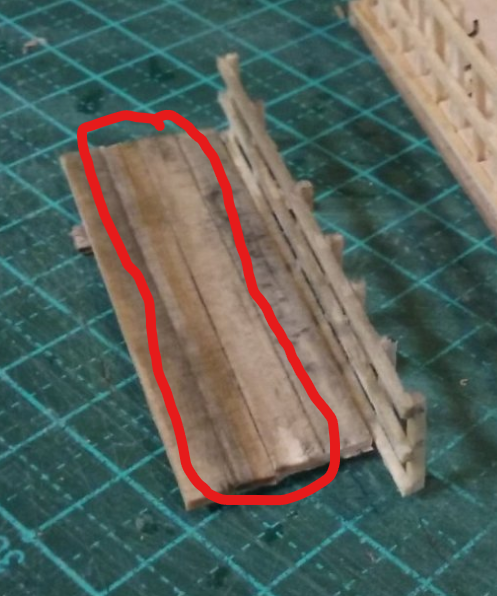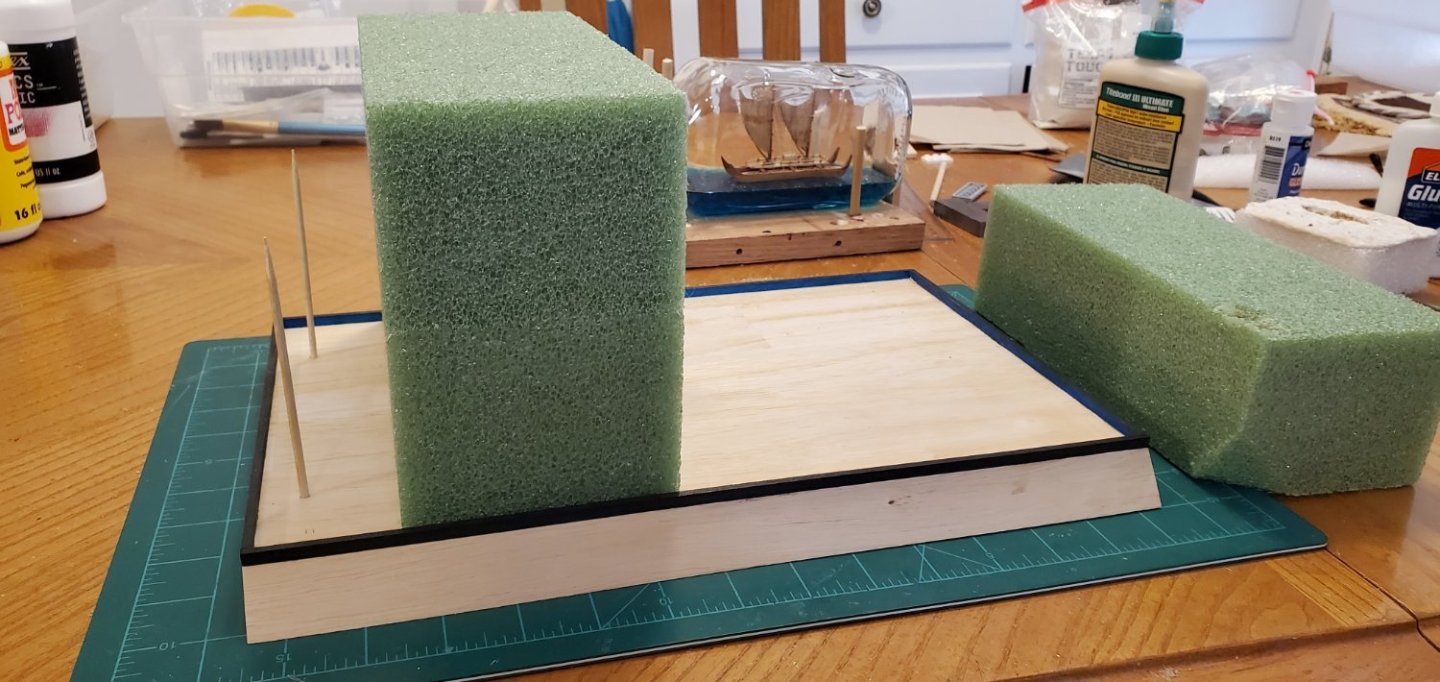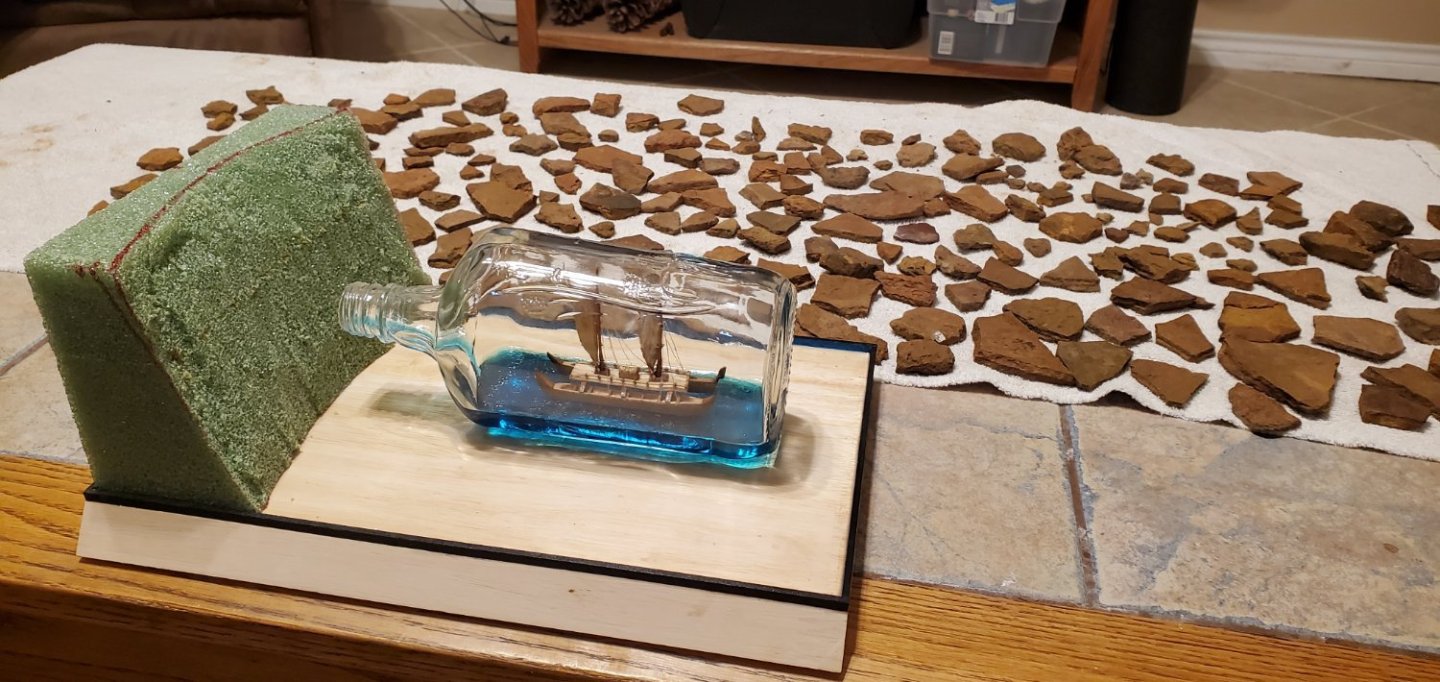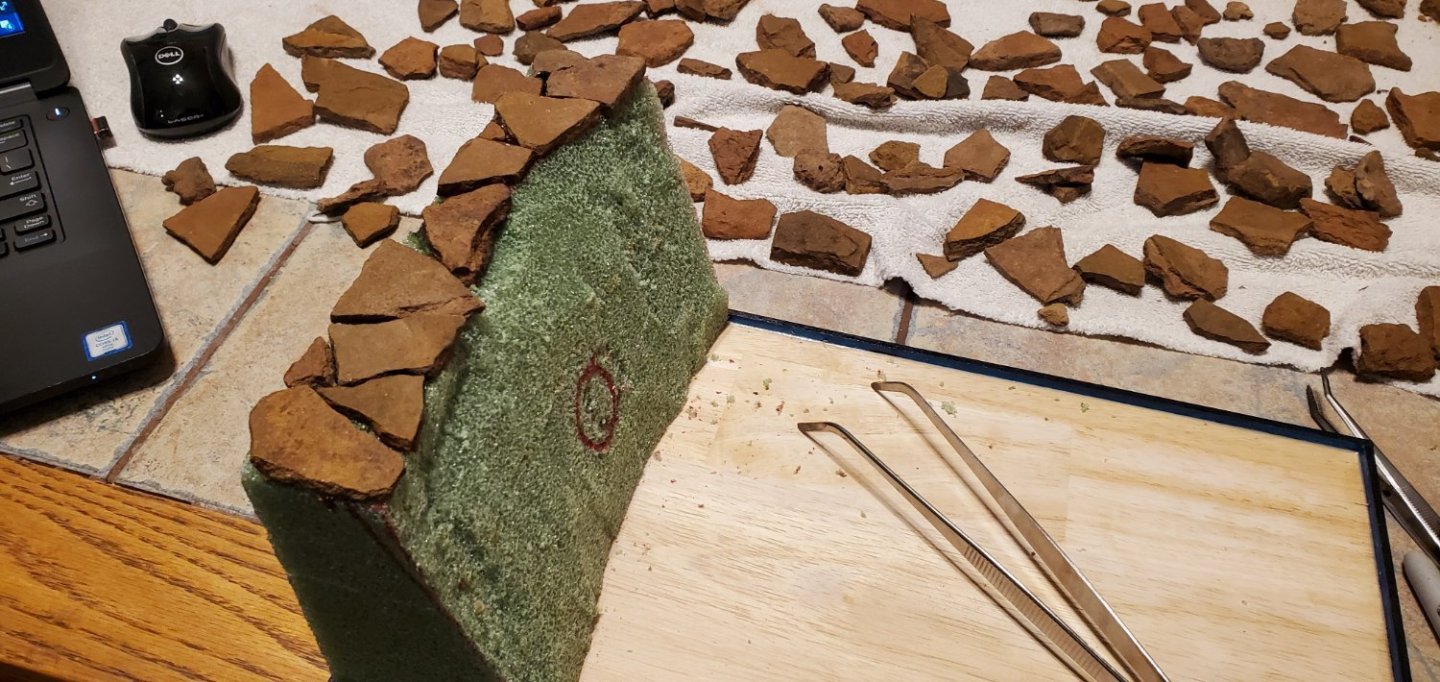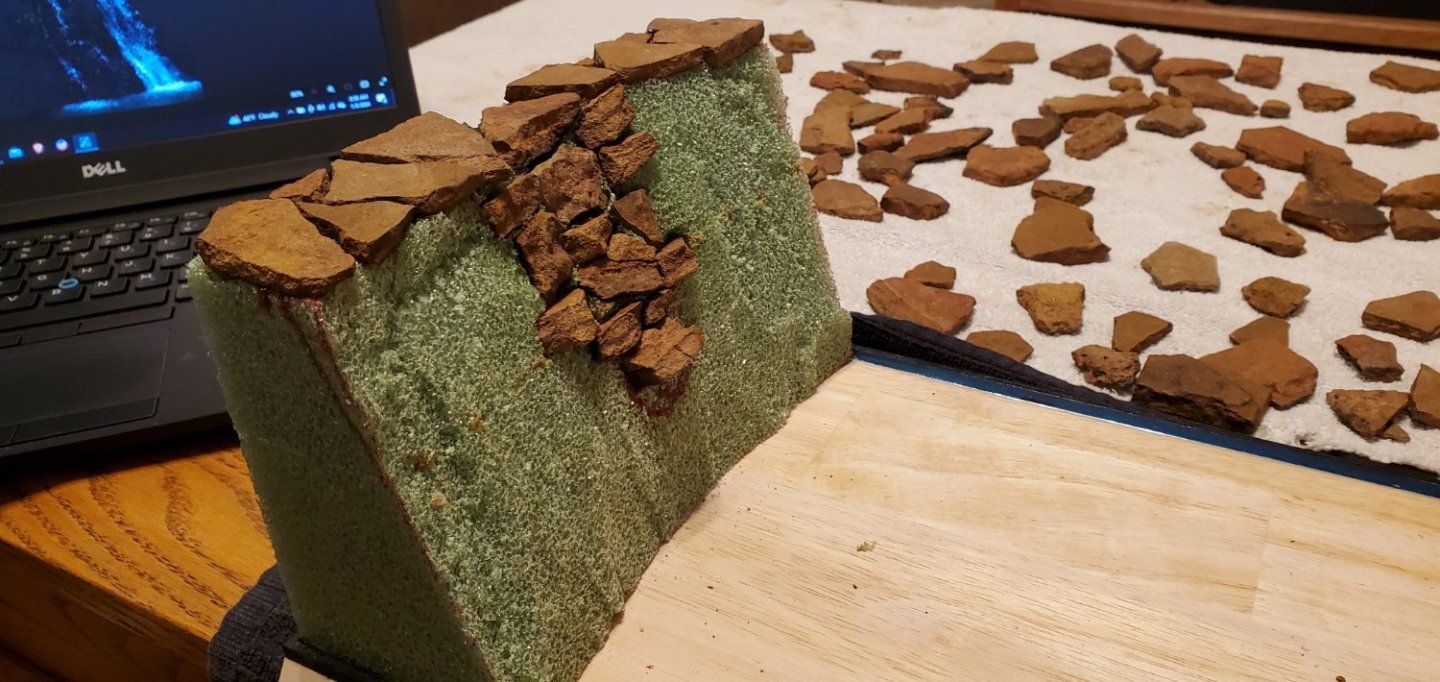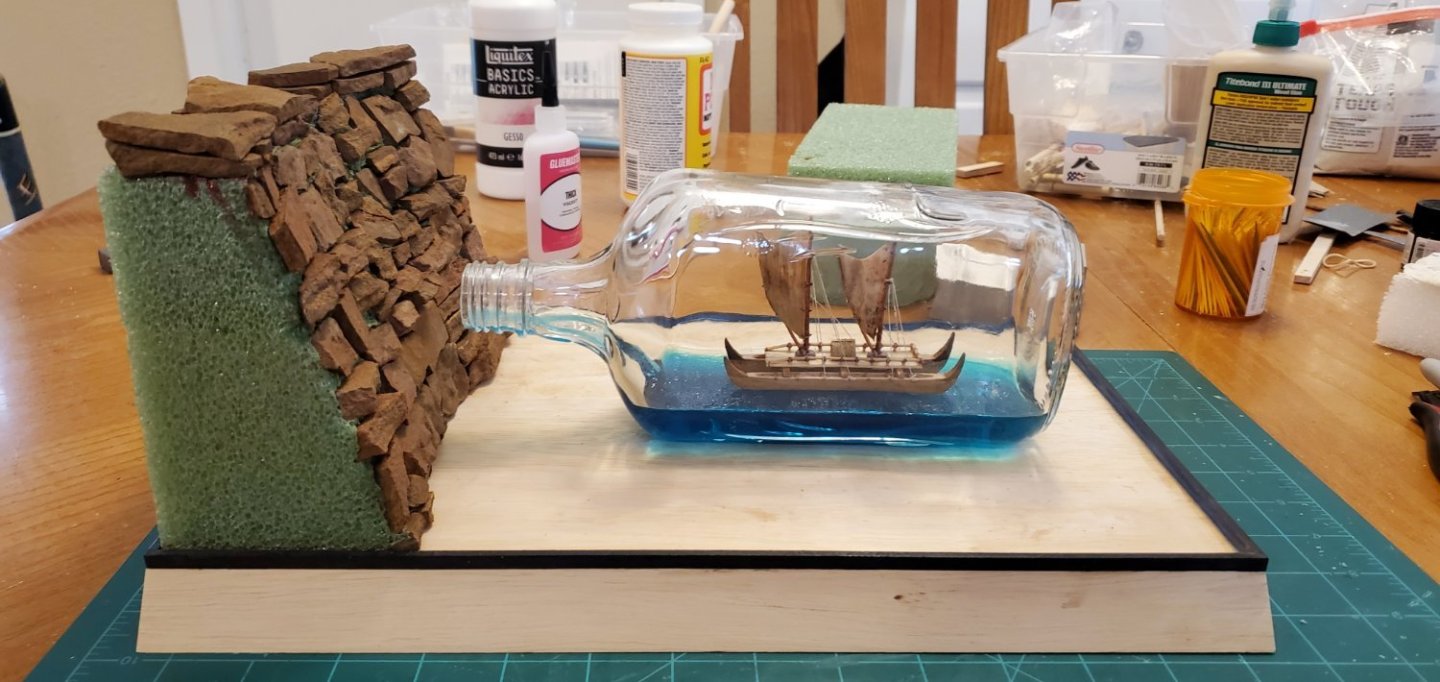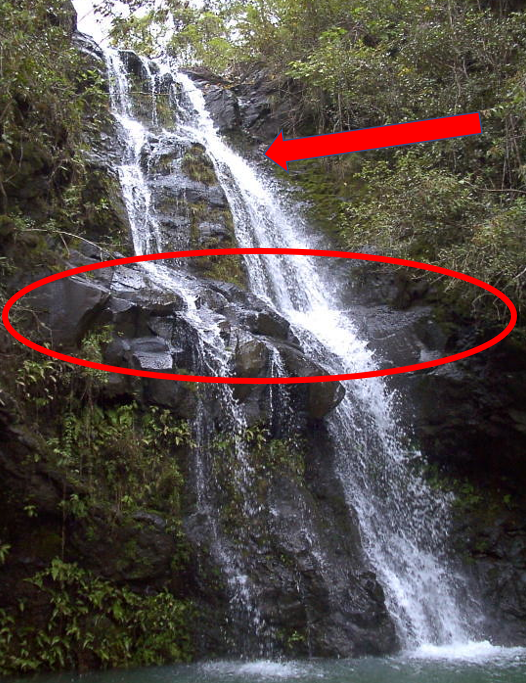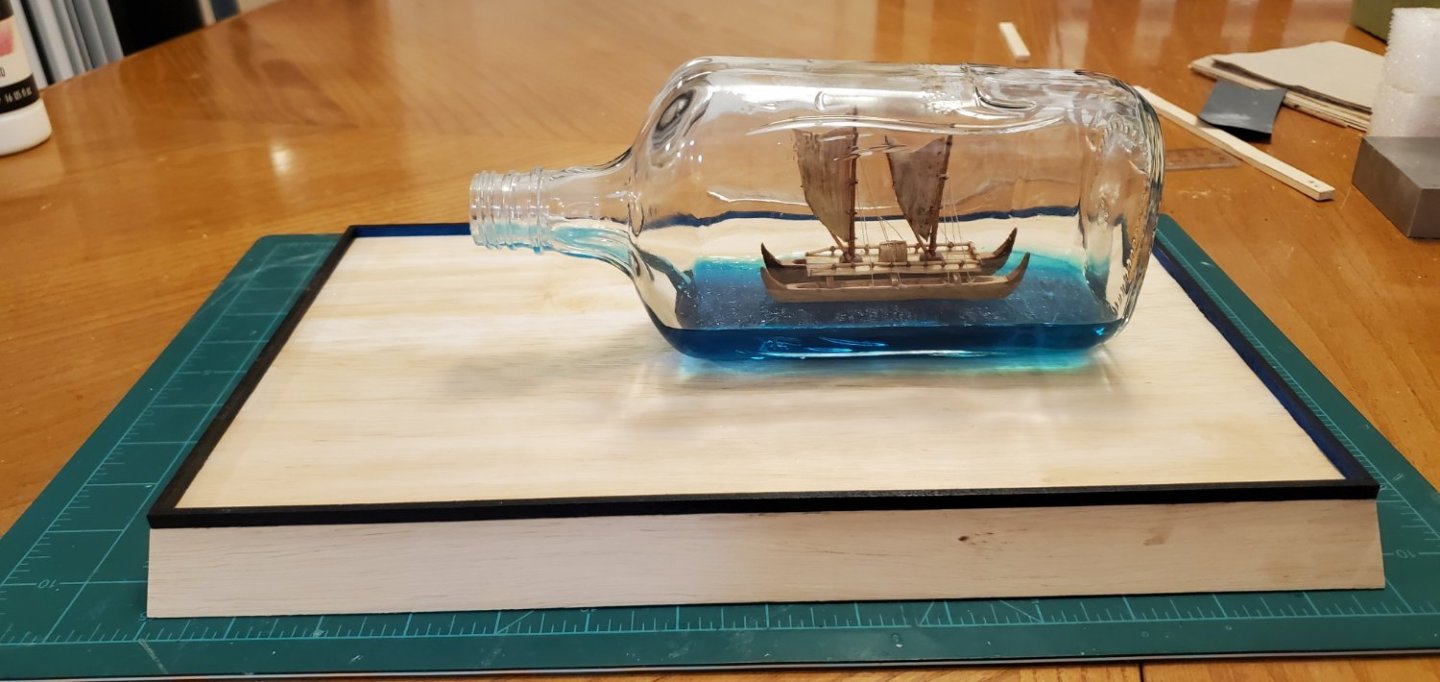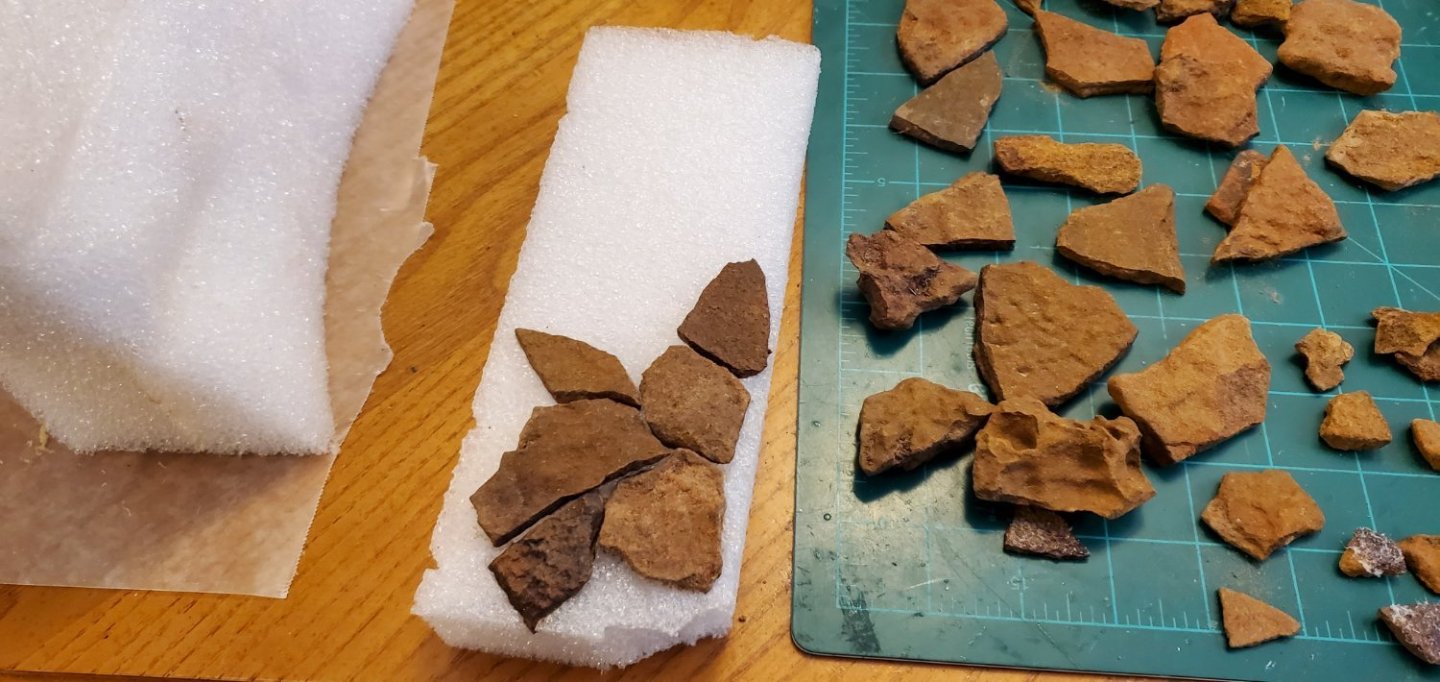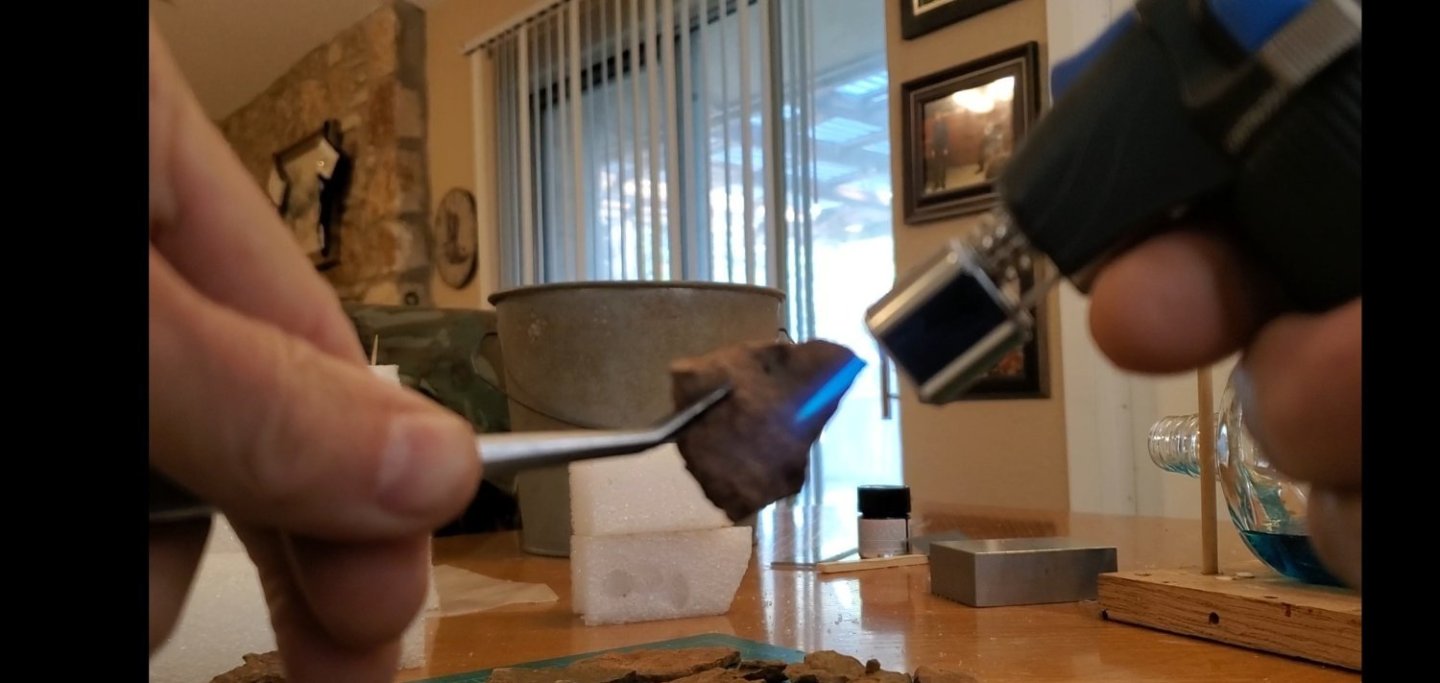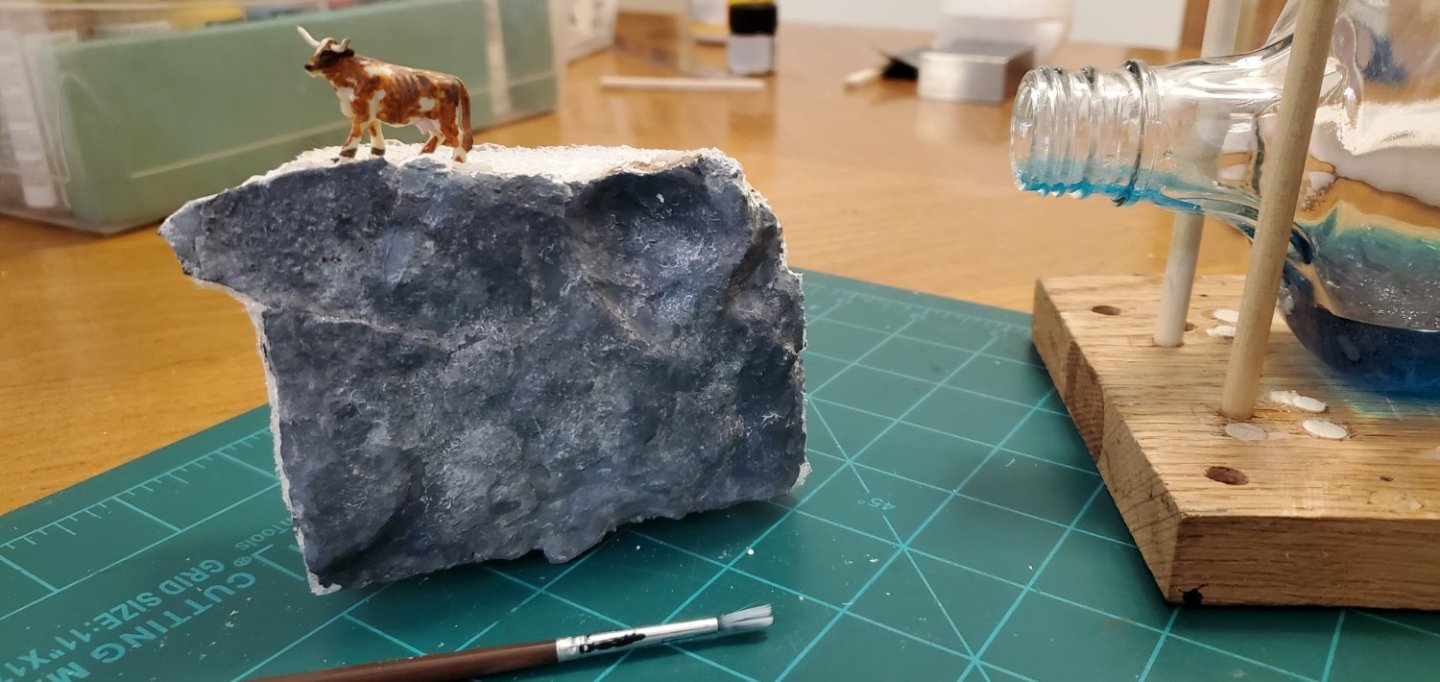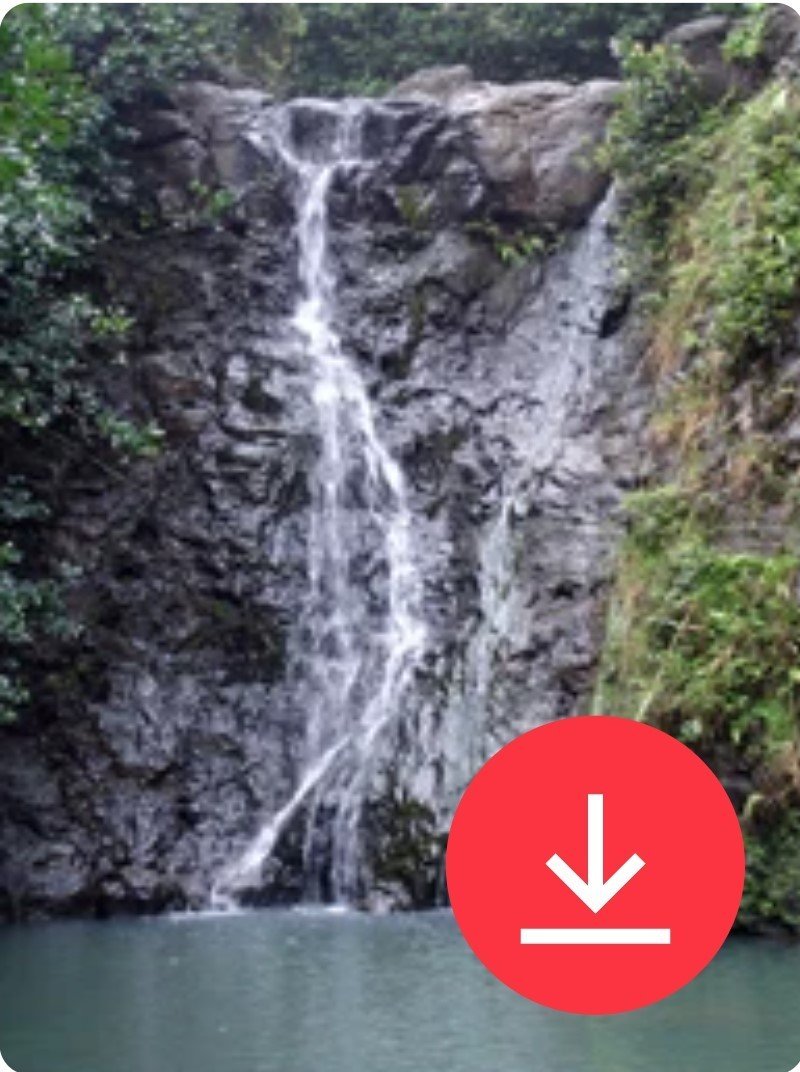-
Posts
1,917 -
Joined
-
Last visited
Content Type
Profiles
Forums
Gallery
Events
Everything posted by Glen McGuire
-
Agree with jpalmer - impressive work with a very tedious process.
- 562 replies
-
- vanguard models
- alert
-
(and 2 more)
Tagged with:
-
I agree with your stepdaughter, it does look very nice. And, you did such a marvelous job making the brace and making it fit. But at the end of the day, it's your decision and either way I don't think you can go wrong since you do have a mosaic prominently showing the brace.
- 508 replies
-
I like the way the middle 2 boards on the left look if you can replicate that on all of them - it's not too much and not too little weathering. I think the black on the far right board is too much. The board on the left is not bad, just maybe a little too dark. I like the way the railings look on that same pic. My 2 cents.
- 508 replies
-
Thanks, Bryan and Pat. I'd say there's a fine line between excitement and adventure vs abject panic!! Thanks, Steven. Still got a long ways to go though - filling in the gaps around the rocks, doing the sides of the wall (still pondering that one), painting the rocks, adding greenery, painting the base, adding the pool water, and finally the waterfall water. I think that's the proper sequence. Thanks, Keith. Yes, I'm going to paint the rocks grayish, in similar fashion as that test piece.
- 174 replies
-
- Waa Kaulua
- bottle
-
(and 1 more)
Tagged with:
-
Work begins on the real waterfall. I bought some foam blocks for floral arrangements, glued a couple together, and cut them to fit my base. I affixed a couple of bamboo skewers to the base which will pierce the foam giving it some extra stability when I load it up with rocks. The next step was cutting the foam to the basic shape of the waterfall's wall. You can also see my large assortment of rocks to choose from as I build the wall. I started affixing rocks at the top with the rock heating/foam melting process I used for my test. Unfortunately, I got off to a rocky start (sorry about that 😁) with the very first piece. It was a bigger than my test pieces so I decided to use a propane torch instead of the butane torch I used for the test. Bad move! When I heated up the rock and placed it on top of the foam, it started sizzling and sinking really fast. I realized it was about to cause a mini China Syndrome and melt all the way thru my carefully shaped foam, so I grabbed it quickly and went back to the butane torch. More progress... And here's the face of the wall complete. At least for now anyway. It's got some ridges that are more noticeable in person than picture, but I'll let it sit overnight and take another look in the morning to see if I want to make them more prominent. I also tried to visualize the flow of the water down the rocks as I was piecing it together, but I found that's a lot harder than I thought. Hard to see the forest when you're working on each tree. So again, I need to step back, let my brain refocus, and look at it with fresh eyes. Viewing from the top, you can see I left 2 small channels on each side of the main channel in the middle. I might have a couple of small ribbons trickling down paths from there. Maybe.
- 174 replies
-
- Waa Kaulua
- bottle
-
(and 1 more)
Tagged with:
-
Looking good, Ian. I think your color scheme will really bring it to life.
- 536 replies
-
- Quadrireme
- radio
-
(and 1 more)
Tagged with:
-
I think you are right, Ken. Penguins AND icicles in a Hawaiian waterfall? So much for global warming!! 😄 Happy New Year to you too, Keith!
- 174 replies
-
- Waa Kaulua
- bottle
-
(and 1 more)
Tagged with:
-
Hey Javelin, are you talking about something like these circled below? Or can you find a picture of what you have in mind?
- 174 replies
-
- Waa Kaulua
- bottle
-
(and 1 more)
Tagged with:
-
Thank you, KG! I appreciate your confidence and encouragement! You know, when you put it like that, it should be really hard for me to mess this one up, shouldn't it! 😃
- 174 replies
-
- Waa Kaulua
- bottle
-
(and 1 more)
Tagged with:
-
Thanks, Bob. Always good to get confirmation that someone else sees the same thing I do! Thanks, Keith. Funny you say that. A friend was over yesterday and asked "why do you have a big rock on your kitchen counter?" 😃
- 174 replies
-
- Waa Kaulua
- bottle
-
(and 1 more)
Tagged with:
-
I hope everyone had a very Merry Christmas and got to spend a lot of time with family and friends. I've been watching a bunch of youtube videos trying to figure out how to approach the second half of this project, which is making the rock wall and waterfall. In between videos, I decided to go ahead and make the base so I could at least feel like I was getting something done. Nothing too elaborate. It's 14" wide by 9" deep with the front beveled for a nameplate. I added a 3/16" rim around the perimeter which will hold in the epoxy resin that makes up the waterfall pool. On to the rock wall. From the youtube videos, I got several ideas for how to make the wall, like stacking polystyrene and scoring with a knife, wadding up newspaper and covering with plaster of paris, making rock molds and casting rocks, or even buying plastic rocks and pushing them into modeling clay. I did some trial and error on a few of these methods which ended up being a lot more error than trial. I just could not get anything to look like I wanted. The video using cast rocks from rock molds seemed to give the best look for my purposes. I was about to pursue that route when I thought why not use real rocks instead of fake ones? There are places at my ranch that have these thin, flat reddish rocks with good texture (no idea what kind of rocks they actually are). So on my next trip out there, I gathered up a few handfuls to try them out. I decided to use some packing foam for the basic shape of my rock wall. I took a small piece of foam and a few rocks to test things out. As you can see, it was kind of like putting a puzzle together. But the next question was how to adhere to the rocks to the foam. Because some of the best looking rocks did not have a real flat or smooth surface, I did not think gluing them on would be very secure. So I decided to try something a little different - melting them on. I took a small butane torch, heated the back of the rock, then pressed it into the foam. This actually worked great because it allowed me to push rocks into the foam at different depths so I could make the outer surface as smooth or blocky as necessary. I tested the melting method on one of the rocks and it adhered to the foam quite securely. So I continued with melting the rest of the rocks onto my test piece. Next, I mixed up a small amount of plaster and filled in the gaps. After that, I put a thin layer of gesso over the whole thing to seal it for painting. And finally, I mixed up some gray and white paint with plenty of water to make a thin wash. I covered the rocks with the wash, then added some darker grays in places for shading. Here's how the final test piece came out. The second pic is the basic color and rock texture I was trying to match. I think my coloring is not too bad. But I think I need to have a few more sharp edges on areas of the wall to give it more of a blocky look like in the picture. For a test run, however, I'm pretty happy with how it turned out.
- 174 replies
-
- Waa Kaulua
- bottle
-
(and 1 more)
Tagged with:
-
Clever solution for the spears and polearms. Well done!
- 508 replies
-
Fantastic work, Keith. Like everything else on this build, your gaff and lift rigging is very clean and crisp.
-
I believe I am the guilty party that asked to see your ship in a bottle (my Oseberg/Kraken build log)! I'm glad you were able to find it and share pictures. Plus, I think you did a marvelous job for a first exercise. Quite impressive! Hope you don't wait too long to make a new version. And Merry Christmas to you and family as well!
-
Hey Greg, I'm not sure what you have in mind here. Can you elaborate on your suggestion?
- 177 replies
-
- Independence
- bottle
-
(and 1 more)
Tagged with:
-
Wonderful work on those Christmas ornaments!! Also, IMHO your Ems Punt would look really good inside a bottle!! Something to think about? Maybe? 😀
- 286 replies
-
@Boccherini, @BANYAN, @Keith Black, @GrandpaPhil, @Knocklouder - Thanks for the Christmas greetings! Merry Christmas to all of y'all and your families and everyone else in this amazing MSW community!
- 174 replies
-
- Waa Kaulua
- bottle
-
(and 1 more)
Tagged with:
-
Your job on the tiller is a killer and a thriller!! Well done! Hope those kids are taking good care of you! Merry Christmas to all!!
- 175 replies
-
- Victory Models
- Pegasus
-
(and 2 more)
Tagged with:
-
Hang in there with all those sick kids and take care of yourself, Bob!! And have a Merry Christmas too! No white Christmas here in central Texas, maybe a suntan!
- 175 replies
-
- Victory Models
- Pegasus
-
(and 2 more)
Tagged with:
-
Well Bob, there are definitely no penguins in Hawaii so I guess you are right! Here they come 🐔🐔🐔!! That little penguin did sneak in! But according to Bob, he's apparently out of a job and I've got to find some chickens. Thank you, Pat. I agree with you about the hull. It was definitely a challenge for me and I have no idea what the next one might be! Thank you, Keith!! Thank you, Mark!
- 174 replies
-
- Waa Kaulua
- bottle
-
(and 1 more)
Tagged with:
-
@Tomculb Hey Tom! Thank you for reviewing my work (so far) and for your comments. What an interesting story about your parents and your time in Hawaii! Thank you so much for sharing. As I did my research and learned more about the culture surrounding these ocean voyagers, I was fascinated at how the vessels were held in such high esteem by native Hawaiians as well as those like you and your parents who spent part of their lives on the islands and understood the history. I have been doing my best to do justice to this special reverence, which is one reason I tried to make my wa'a kualua out of as many native Hawaiian materials as possible. I absolutely love that model that your father found and you inherited. What a lovely tribute to him to have that model sit close by while you work on your models. As for sailing out on a Hobie to welcome the Hokulea on her return from her maiden voyage. Whoa!! What a cool thing to do!! While I did not try to build a copy of the Hokulea, I did use her plans as a baseline for some of my boat (like the relative hull and mast dimensions). She is an amazing vessel with an amazing story. I'm really glad you found this build log and shared your story!
- 174 replies
-
- Waa Kaulua
- bottle
-
(and 1 more)
Tagged with:
About us
Modelshipworld - Advancing Ship Modeling through Research
SSL Secured
Your security is important for us so this Website is SSL-Secured
NRG Mailing Address
Nautical Research Guild
237 South Lincoln Street
Westmont IL, 60559-1917
Model Ship World ® and the MSW logo are Registered Trademarks, and belong to the Nautical Research Guild (United States Patent and Trademark Office: No. 6,929,264 & No. 6,929,274, registered Dec. 20, 2022)
Helpful Links
About the NRG
If you enjoy building ship models that are historically accurate as well as beautiful, then The Nautical Research Guild (NRG) is just right for you.
The Guild is a non-profit educational organization whose mission is to “Advance Ship Modeling Through Research”. We provide support to our members in their efforts to raise the quality of their model ships.
The Nautical Research Guild has published our world-renowned quarterly magazine, The Nautical Research Journal, since 1955. The pages of the Journal are full of articles by accomplished ship modelers who show you how they create those exquisite details on their models, and by maritime historians who show you the correct details to build. The Journal is available in both print and digital editions. Go to the NRG web site (www.thenrg.org) to download a complimentary digital copy of the Journal. The NRG also publishes plan sets, books and compilations of back issues of the Journal and the former Ships in Scale and Model Ship Builder magazines.

